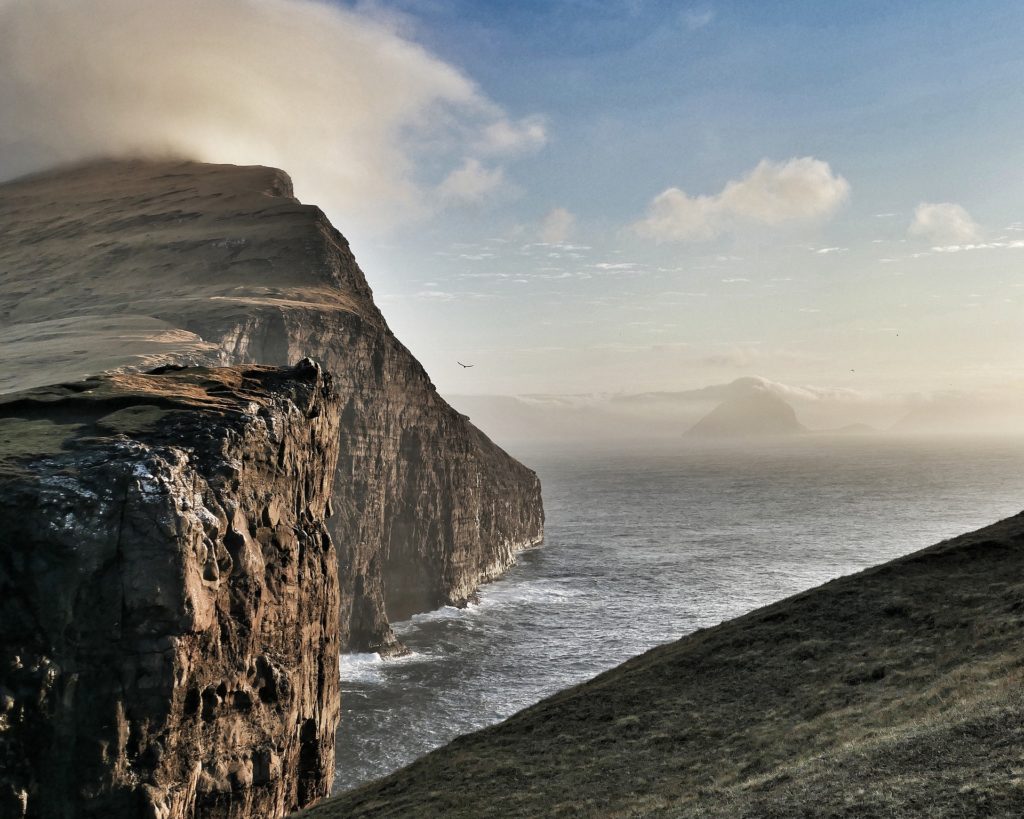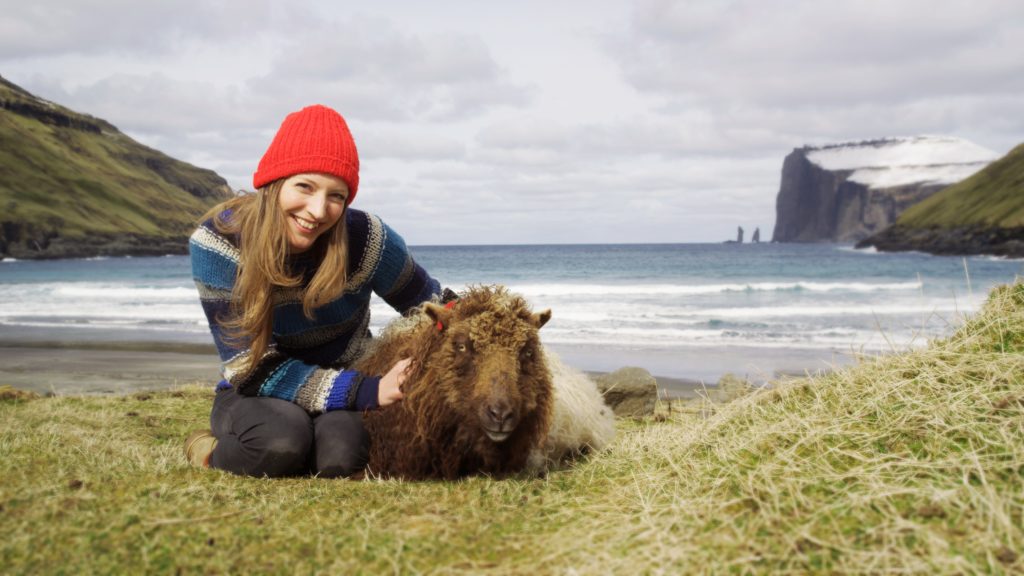
On the map of Europe, the Faroe Islands can only be recognized as a small dot in the North Atlantic and are therefore hardly noticed by many. If someone should have some knowledge of this island group, the keywords wind, fog and rain usually fall. That the Faroe Islands are above all an undiscovered natural paradise with landscapes of breathtaking beauty is known to very few people. But slowly they become an insider tip – a “must see” – for all who love Nordic landscapes!
So far, as an Icelander, I have been more attracted to destinations that are far away instead of the neighboring Faroe Islands. However, when I recently studied the history of the Faroe horses and looked at photos of their home, I immediately felt how strongly the landscape captivated me and the island group was abruptly catapulted to the first place on the wish list of my travel destinations.
Therefore, I have spontaneously booked a short trip to the Faroe Islands for early March 2022. I am incredibly excited and am already looking forward to reporting to you afterward about my impressions of the landscape, the people, and of course the little horses that live there. Until it is finally time, I have compiled some facts from the Internet and two videos for you. Maybe some of you will also desire to visit the islands thereafter!

The highest cliff in the world
Strictly speaking, the Faroe Islands are located between Scotland, Norway, and Iceland and consist of a total of 18 islands, most of which rise steeply out of the sea on an area of 1.396 km2. The smallest, Lítla Dímun, has just 0.8 km2, the largest, Streymoy, covers 375 km2.
The islands are mountainous with rugged cliffs and cliffs that are among the highest in the world. Cape Enniberg on Viðoy, for example, is one of the highest vertical cliffs in the world at 754 meters. On Kunoy is located cliff Kunoyernakkur. It is higher at 819 meters but does not rise vertically from the ground.
Those who take a hike to the highest mountain in the archipelago, Slættaratindur (880 meters) on Eysturoy, will be rewarded with a view of all 18 islands on a cloudless day. In good weather conditions, it is said that you can even see as far as Iceland.

More sheep than Faroese in the Faroe Islands
Sheep breeding has been the most important business of the Faroese for centuries and sheep’s wool has become the most important commodity and the number one export. “Ull er Føryoa gull” or translated “wool is the gold of the Faroe Islands” says an old Faroese proverb. Therefore, it is not surprising that the name Føryoar means sheep islands in Faroese.
When Nordic settlers came to the Faroe Islands in the 9th century, there were already Irish monks and plenty of sheep. The animals brought by the people were perfectly adapted to the harsh nature of the islands with the steep mountain slopes because they are frugal, sure-footed, and probably also free from vertigo. Furthermore, they are equipped with valuable wool and can withstand any weather.

Rising number of inhabitants
The population on the Faroe Islands initially developed slowly. Only from the middle of the 19th century, clear population growth could be observed. In 1900, just 15,230 people lived on the Faroe Islands. Today, 121 years later, there are 53,513 (October 2021), which corresponds in size to a city like Schweinfurt in Germany.
About 52% of the population are men, 48% women. Life expectancy for men averages 79.9 years, for women 84.4. The Faroese birth rate is among the highest in Europe, at 2.4 children per woman. All but one of the islands are inhabited. At the same time, the number of inhabitants varies greatly. Almost half of the population (48%) lives on the island of Streymoy, where the capital Tórshavn is located.

Lonely areas with low population density
All but one of the islands are inhabited. However, the population density is very different and varies from 1.1 to 66.9 inhabitants per km2. About half of all Faroese (48%) live on the island of Streymoy, where the capital Tórshavn is located.
Many of the islands are connected by tunnels or bridges. However, some are accessible only by boat or helicopter.

Relationship between Faroe Islands and Denmark
The Faroe Islands are an autonomous part of the Kingdom of Denmark, and since 1948 their inhabitants have administered most of their internal affairs themselves. Only for police tasks and defense and foreign policy, Denmark is responsible.
The Faroe Islands are strongly supported financially by Denmark which, among other things, leads to the fact that the nation is divided into two almost equally large camps on the question of independence. In a referendum in 1946, the vote was so close (for independence) that a second vote had to be held. In the second referendum, the narrow majority against independence was achieved, and it has remained so to this day.

The Faroese can choose between a Faroese-Danish passport or a Danish passport, but they are all Danish citizens. They have their own currency, the Faroese krone, which is a kind of local form of the Danish krone and has the same value as it.
Unlike Denmark, the Faroe Islands are not members of the EU to protect their fishing grounds.
“The smallest” of the Germanic languages
The Faroese speak their own language called Faroese. It is an old nordic language, most closely related to Icelandic.
In the 16th century after the Reformation of the Church, Faroese was banned in public life, in schools, and in the church. For three centuries the language lived on only in the traditions of the Faroese people, such as in their stories, poems, and dances. It was not until 1938 that Faroese people were allowed to speak their language again in churches and in schools. Ten years later, Faroese was declared the main language of the islands.

Danish is officially the second language on the islands. English is understood and spoken by most Faroese, as it is also taught in schools.

Here, you can hear how it sounds when Faroese say “I love the Faroe Islands ” or “alright” (click text).

Weather in the Faroe Islands
The weather in Faroe Islands is extremely variable and humid. Winters are mild, but summers are usually quite cool.
The average temperature in 2020 in the capital Tórshavn was 7.2°C (maximum temperature 16.4°C and the lowest -3.6°C). There were 1092 hours of sunshine, 33 frost days, the average precipitation was 1288 mm.
A successful advertising campaign
In 2016, an advertising campaign led by Durita Dahl Andreassen was launched in cooperation with Visit Faroe Islands and Atlantic Airways with the aim of introducing Google Street View to the islands and in this way making the islands better known.
With an ingenious idea, Durita Dahl Andreassen managed to draw the world’s attention to the Faroe Islands. Once again, it is the sheep that play a big role for the Faroese!

Google Sheep View 360°
By equipping free-range sheep with a 360° camera and solar cell, videos and pictures of beautiful landscapes of the islands could be taken. Via Durita’s cell phone they could be uploaded to Google Street View as a so-called Google Sheep View. The action was regularly accompanied by very funny blog posts, which quickly became popular and got many followers.
After just a few weeks, the mission was accomplished: Google came to the Faroe Islands and introduced Street View on the islands. At the same time, all hotels on the islands were fully booked!

Sources:
https://www.visitfaroeislands.com/
https://www.faroeislandstranslate.com/
https://de.wikipedia.org/wiki/Autonomie_der_F%C3%A4r%C3%B6er
